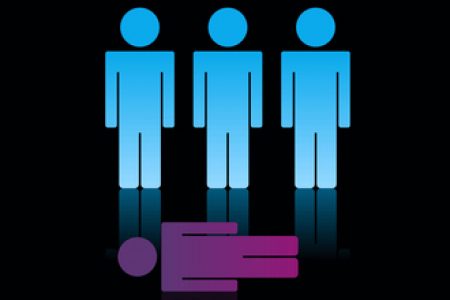Stress, anxiety and adapting to uncertainty in everyday life
Our world may seem unpredictable and uncertain, especially when others are involved. When interacting with others, we cannot know for sure what they may be thinking or planning to do, but we do a good job guessing. This may not be so easy for everyone…
Knowing who to turn to in an uncertain and dynamic world
Imagine you need help moving house and you have to ask someone for a favour. Or you’ve taken on more responsibilities than you can handle at work and are thinking of asking a colleague to take over a task. You would probably consider various things when deciding who to approach. For example, you would try to think of someone reliable. But you would also consider how important or big a favour you are asking. You would probably be less likely to ask a person who has a long record of not keeping their promises to help with moving, but you might still ask them to put away the coffee cup you forgot on your desk in the office. In the latter case, even if the person agreed to help you but forgot about it, the inconvenience would be minor.
Given that we do not have direct access to other people’s moods, thoughts, and motivations, we try to make guesses or form expectations on the basis of our prior interactions with them. Forming and updating our expectations as we engage in interactions with others can be challenging due to uncertainty. Facing uncertainty when making decisions is unpleasant for most of us. However, people with anxiety experience uncertain situations as especially stressful. So, how do anxious people make decisions in uncertain social contexts?
Anxiety, stress-related problems, and decision-making under uncertainty
So far, research on anxious people has mainly focused on decision-making in non-social or individual contexts. These studies have reported altered decision making under uncertainty among participants with anxiety and other stress-related problems, suggesting that these individuals struggle with estimating and adapting to uncertainty when making decisions. An unexpected event in the environment may either require immediate action, or signal a random and rare event, which is better ignored at that time. For example, if your usually so reliable car does not start one morning, you are likely to spend a while trying to start it; however, if you ’re convinced that your is broken and probably won’t be fixed quickly, you might decide to take the bus that day instead. Anxious or stressed individuals have more difficulty responding adequately to these different types of uncertainty. Some studies have also provided evidence for a link to differences in people’s arousal and stress responses, as reflected in pupil size and reactivity.
Given these problems in non-social contexts, it is plausible that anxious individuals experience similar or even more severe problems in identifying who to approach or avoid, and in adapting their expectations when engaging in social interactions as reported in a recent study. In fact, this might be a part of the reason why those individuals generally report poor social functioning, which, in turn, is a crucial factor in coping with stress-related symptoms and in resilience to mental health issues.
Similarly with the car example, we would not think a classmate is unreliable if on one or two occasions they failed to deliver what they were supposed to, especially if they had a good track record. They may have fallen ill, which does not necessarily mean they will disappoint us again. However, if we think this will happen repeatedly, it may be time to choose a different partner for the next project. Does a highly anxious person who has a low tolerance for uncertainty also think this way? Are they perhaps too quick to judge the other person unreliable and miss out on future positive interactions with that person? Or are they rather too slow to judge, so that they have negative experiences again and again? Finally, what are the neurocognitive mechanisms and factors explaining the differences? We plan to answer these pressing questions by setting up experiments to measure people’s behavioural, neural, and other physiological responses to unexpected events in non-social and social contexts.
Building a resilient brain
One important risk factor for developing psychopathology, including anxiety, later in life is exposure to adversity in childhood and adolescence, when the brain is more malleable. Adverse experiences usually involve interpersonal stressors such as emotional or physical abuse and neglect, which are believed to have detrimental effects on socioemotional and cognitive development. Moreover, individuals who are exposed to adversity early in life grow up in environments characterized by increased unpredictability. Receiving unpredictable cues from their caregivers and social environment early in life may make it difficult for these individuals to learn about and adapt their expectations of others. However, not all individuals who have been through adverse experiences develop psychopathology or show social dysfunction. It might even be that responding optimally to uncertainty and changes in the environment is associated with higher resilience following adversity. In that case, it would be important to target the mechanisms involved in estimating and adapting to uncertainty to promote resilience.
It is both a challenge and an exciting avenue for research to integrate individual differences with the ways and contexts in which people adapt to their environments despite all the uncertainty involved. How we make decisions, and how those decisions can be affected by modes that alter our appraisal of uncertainty, may have important implications for future interventions to foster resilient outcomes. However, to better understand the mechanisms and factors that facilitate resilient functioning in all its complexity, we need an interdisciplinary perspective: this is the approach intended by the collaborative efforts of the researchers of the Social Resilience and Security program.





